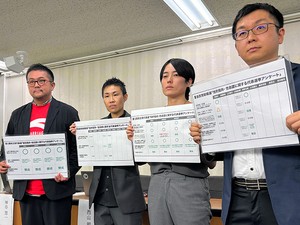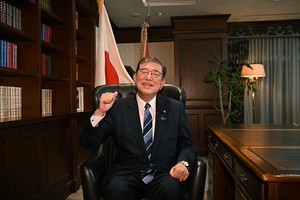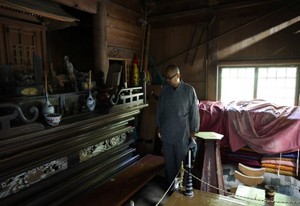THE ASAHI SHIMBUN
September 28, 2024 at 08:00 JST
If poverty-level wages and long days were not adversity enough, another sunny fact about the anime industry is that creators are using tech older than some of their fans to pump out episodes.
“We have been using the same kinds of machines and software for about 20 years now,” said a source close to a studio responsible for a popular anime title.
System support and updates are literal things of the past when adding color to characters as the vendor has shut down the program’s servers. The source also said there is no alternative that is easy and convenient to use.
Meanwhile, the market amassed a global value of 3 trillion yen ($20.8 billion) in 2022, more than twice the figure from 10 years ago, according to the Association of Japanese Animators.
Another conundrum is because there are too many anime projects to juggle, “we can’t accept them even if we want to,” said a senior member of a leading studio.
Amid fears this will slow the market’s growth, Sony Group Corp. is working on software that members of the anime industry hope will ease their anxieties and meet their high expectations.
AIMING FOR NEXT SPRING
“We aim to introduce AnimeCanvas, an anime production software application currently under development, on a trial basis by the end of March next year,” President Hiroki Totoki said during a news conference in late May covering Sony Group’s management policy.
AnimeCanvas is spearheaded by Akira Shimizu, who serves as president of both A-1 Pictures Inc. and CloverWorks Inc. The two studios are among many working with Aniplex Inc., Sony’s affiliate production company.
“I came up with the project to make a software dedicated to making animation, which would serve as the foundation for its production,” Shimizu said.
The program, although split into two parts, would make it possible for studios to execute the three overarching steps of the animation process all in one place.
Key frames are a single instance that act as signposts for “key” moments where a character stops or starts an action. For example, a drawing of a character sitting in a chair may be one key frame followed by a second where the character is standing.
In-betweens involve the tedious process of filling in the motion that connects key frames—so, the character standing up from the chair.
The “shiage” finalization stage of production includes coloring and compositing frames and is separate from the portion of the software for key framing and in-betweening.
Alleviating the continual migraine software has posed to studios was one of Sony’s leading motivations in developing AnimeCanvas.
Aside from being resigned to using outdated programs, creators have sometimes settled for whatever is “close enough” to get their work done.
One senior member at an anime studio shared that the company has no alternative but to use an application tailored for manga production for its line art of characters and other objects.
AnimeCanvas—as its name implies—pointedly excludes manga-specific tools as much as possible.
“From studios’ perspectives, they want a sustainable application dedicated to animation production,” Shimizu said, adding that presidents of many studios share the same sense of crisis.
This does not only cover individual jobs but applies to the entire production flow and keeping things organized.
In practice, the hope is things such as detailed instructions from a key animation supervisor will not get lost, resulting in delays, when key frames are passed on to in-betweeners.
From there, in-betweeners would have a clear understanding of what needs to be modified.
Sony intends to initially introduce the shiage half of AnimeCanvas on a trial basis to animators at its subsidiaries and intends to eventually sell the entire software to other companies.
WHO REALLY PROFITS?
Although Sony is known for semiconductors and other high-tech products, its entertainment trifecta—video games, movies and music—accounts for about 60 percent of its sales.
It also continues to reap a hefty slice of the profits since founding Aniplex in 1995.
While Ufotable Inc. brought it to life, Aniplex shares the renown as producer of the mega-hit “Demon Slayer: Kimetsu no Yaiba” franchise.
However, this is not a one-hit wonder situation. Nor does Aniplex exclusively produce and distribute titles; its ventures cover licensing merchandise, such as figures, and it jointly owns the anime streaming service Crunchyroll LLC with Sony Pictures Entertainment Inc.
The “Fate” universe and “Puella Magi Madoka Magica” are two long-lived cash cows while “Bocchi the Rock” and “Wind Breaker” are current examples of its industry power.
With its extensive reach, Sony said it is incorporating the feedback and expertise of its subsidiaries’ anime production departments with in-house engineers to develop AnimeCanvas.
The reality, however, is most anime studios are small or midsized. Very few of them are well-financed.
“Even if it is easy to use, (such companies) can’t purchase the application if it is expensive,” said a source close to a major production company.
With everything to gain, Sony appears to have accounted for this.
“We have no intention to make a big business out of it,” said Masashige Komatsu, general manager of Sony Group’s Corporate Project Promotion Department.
He added that the company is planning to sell AnimeCanvas at a price range that is affordable for companies with limited financial resources.
“The problem is that there is not enough supply of anime titles in the first place,” Komatsu continued. “Simply said, if Japan’s anime industry is invigorated, it will contribute to our profits.”
While Sony is banking on AnimeCanvas acting as this spark, the industry’s root problem remains unsolved.
During a corporate presentation in May, Totoki partially attributed industry demand to the success of “Demon Slayer,” Crunchyroll’s 13 million international subscribers and a record of more than 34 million votes cast in this year's “Crunchyroll Anime Awards.”
Despite these numbers, unstable working conditions and zero trickle-down from a show’s critical or monetary success are still norms. This has inspired the creation of nonprofits such as the Animator Dormitory Project, which was established in 2010 and relies on crowdfunding to provide housing for animators.
Masuo Ueda, a former president of A-1 Pictures and Aniplex, more recently founded the Nippon Anime & Film Culture Association (NAFCA) in 2023. One of the group's goals is to submit policy proposals to the government for better working conditions.
Animators continue releasing shows in spite of circumstance. AnimeCanvas will hopefully act as a balm, but the individuals behind each season’s instant classics and blatant cash grabs alike will need more than one shiny new tool to ensure their industry is a sustainable one as it continues to grow.
(This story was written by Shiki Iwasawa and Sho Ito.)




















Stories about memories of cherry blossoms solicited from readers
Cooking experts, chefs and others involved in the field of food introduce their special recipes intertwined with their paths in life.
A series based on diplomatic documents declassified by Japan’s Foreign Ministry
A series on the death of a Japanese woman that sparked a debate about criminal justice policy in the United States
A series about Japanese-Americans and their memories of World War II
Here is a collection of first-hand accounts by “hibakusha” atomic bomb survivors.